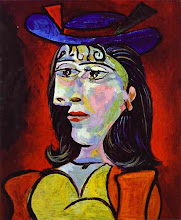 I just started reading this with my 6th grade class, a very discerning audience, and they are hooked. Well, I wasn't exactly taking risks when I chose this because, as you can see from the cover, other discerning audiences think it is good too.
I just started reading this with my 6th grade class, a very discerning audience, and they are hooked. Well, I wasn't exactly taking risks when I chose this because, as you can see from the cover, other discerning audiences think it is good too.This non-fiction reads like fiction and Murphy does all the things good fiction writers do. The opening chapter transports the reader to Philedelphia and we are surrounded by the sights, smells, and sounds of 18th Century urban America. This chapter ends with the image of Yellow Fever as a silent and deadly stalker roaming the streets of Philadelphia. Ooooh, sixth graders love that stuff!
Murphy deftly mixes social and political history without losing his narrative flair and, therefore, his audience. Murphy's advice for non-fiction writers is, "Whatever you do, write visually!" and realistic descriptions of open sewers and bowel movements certainly stick in the reader's mind. His genius in writing for younger readers is his ability to bring this major historical event down to a personal level where the choices of one person can be seen to affect the course of history itself.
If you wanted to pair and compare An American Plague with a fictional account of the event, the riveting Fever 1793 by Laurie Halse Anderson is a great choice. It tells the story of a 14 year old girl whose family runs a coffee house in ill-fated Philadelphia. Anderson's book is well researched and uses many of the same characters and events as Murphy's.

No comments:
Post a Comment